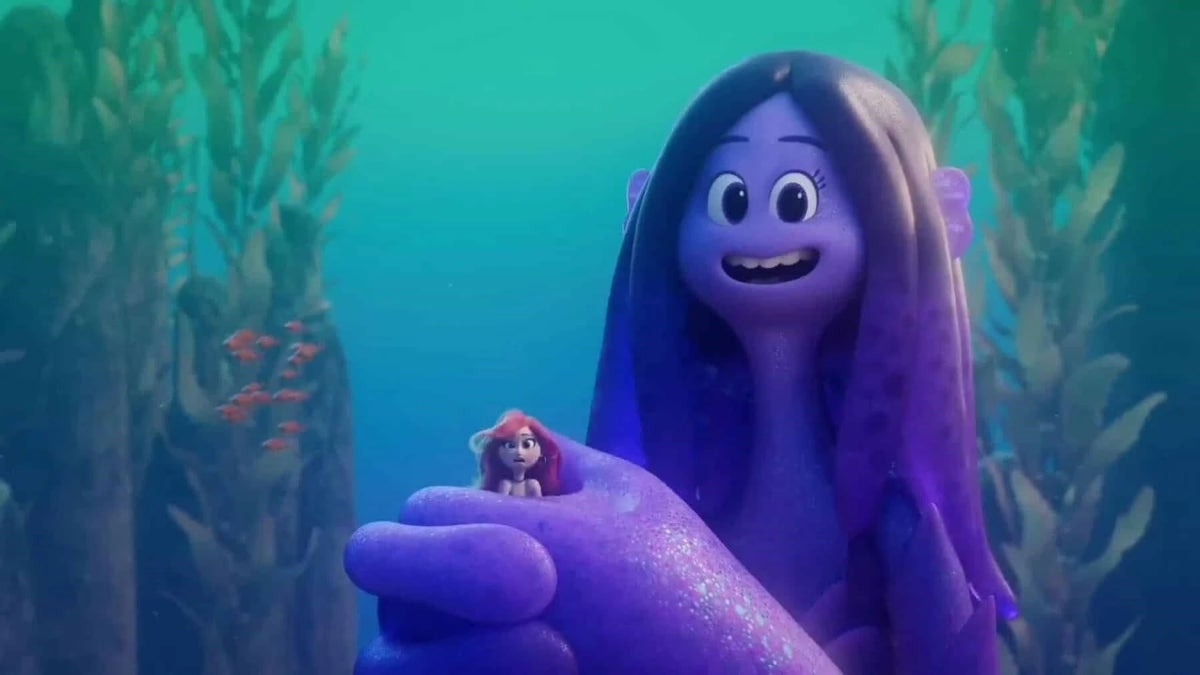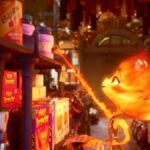
DreamWorks Animation’s “Ruby Gillman: Teenage Kraken” (in theater’s now) is a different kind of undersea adventure.
The title character is a seemingly regular teenage girl living in the town of Oceanside (voiced by Lana Condor) who knows that her family is keeping something from her but doesn’t understand that she is actually the latest descendant in an underwater kraken kingdom. Thankfully, she reconnects with her grandmother (Jane Fonda) and together they unlock her kraken powers. Or maybe the right phrase is release the kraken.
And she’ll need it, as she’s got to do battle with a cute, popular girl who is also an evil mermaid. (Like Disney’s fabled mermaid, she also has red hair.) This leads to an unexpectedly epic kaiju battle between mermaid and kraken that is pretty amazing.
TheWrap spoke to director Kirk DeMicco, who helmed “Ruby Gillman: Teenage Kraken” (with co-director Faryn Pearl), shortly before the movie’s splashy (get it?) premiere at the Annecy International Animation Film Festival. DeMicco previously directed (with Chris Sanders) “The Croods” for DreamWorks and last directed “Vivo,” which began life as a DreamWorks project before moving to Sony Pictures Animation. He’s back! And he’s fired up about his utterly charming new film. We talk about how he got involved, what informed the design language of the film and whether or not Guillermo del Toro had seen “Ruby Gillman: Teenage Kraken.”
How did you get involved with “Ruby Gillman?” “Vivo” just came out in 2021.
I had just wrapped “Vivo” and was I got a call from Chris Kuser, a development executive I worked with since 2003 at DreamWorks, who told me about his project. I think talked to [producer] Kelly Cooney and [executive producer] Mike Mitchell. They’re all basically saying the same thing, like, “Come jump on this.”
The thing that was really exciting for me, one was the chance to tell a mother/daughter story. With “Croods,” we a father/daughter story and I was always intrigued about telling a mother/daughter story. This was an opportunity to do that. The other thing was the opportunity to work with Pierre-Olivier Vincent, who I worked with a little bit, never directly but around at DreamWorks. He had helped us out sometimes on other things. And I knew that there was an opportunity for a big world build with this movie, especially underwater and with the kaiju battle.
There’s this quality of the epic in the mundane, that I always liked. And so that was really exciting. Because he and Dave Walvoord, who were both on all the “How to Train Your Dragon” films, we had a window of time to make this movie but two of the best in the business at pulling it together. There’s a certain voice and I was such a fan of their work. I thought this was an opportunity to do the high school comedy but at the same time really leaning into that world building.
Then we started doing a lot of casting on the movie and we got Jane Fonda on board, Toni Collette came on. There was some pieces already in place. But that was it. And then I started working, writing with [co-director] Faryn [Pearl] and others on the rewrite. And as you may remember, it was announced it was called “Meet the Gillmans” and over time, it became “Ruby Gillman, Teenage Kraken” because as we pulled focus on the movie and it was really Ruby’s story. This is the first titular female lead in 40 films at DreamWorks so I wanted to ensure that she wasn’t in it because there’s someone else. It’s about her, it’s her movie and that was really important. I think once we started all holding hands on that idea, things started to fall into place – that we were going to track one girl’s experience across the most difficult, the most dangerous part of the high school experience.
Can you talk about where the Lisa Frank sticker book aesthetic came from?
From the design aspect, that visual language was really inspired by looking at cephalopods – looking at octopus, looking at the curves. We made the decision very early on that we would have curves throughout everything. Even every piece of furniture is curved, the characters themselves, and then how do we take that down into the to the Kraken kingdom?
That also played into all of the surfacing, which is I think, actually spectacular. It’s all jade and glass, it’s all minerals and organic but it has color, it’s vibrant. We wanted the underwater palace, from the outside, look foreboding and deep sea and have to withstand the pressure of the abyss. But inside, the idea was that it was still appealing, it was still grand and majestic, bringing these colors to life.
And the same with Oceanside – the design that they came up with for the high school and then the library (which ultimately she bursts out of) is almost a steel cage that was made out of old storage containers. Almost everything was influenced throughout from either a nautical themed part of the of the language but also the curves.
You brought up this “Pacific Rim”-style kaiju battle and Guillermo del Toro is a friend of DreamWorks. Have you shown him the movie yet?
No, I think you’re one of the firsts to see it. We like lucky enough that there’s a bunch of people there that I worked with before, who helped out like Tom McGrath, Mike Mitchell, Joel Crawford. A lot of people came by and really helped.
“Ruby Gillman: Teenage Kraken” is in theaters now.
















